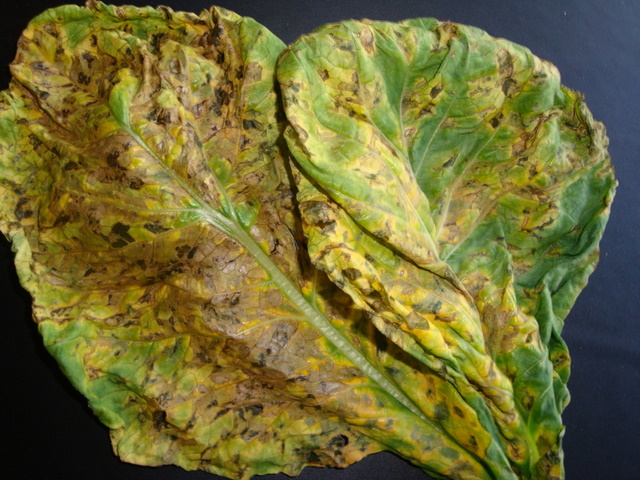Crops > Vegetables > Crucifers > Head cabbage > ?Downy mildew, Brassicas, FSM
Crops VegetablesCrucifersHead cabbage ?Downy mildew, Brassicas, FSM
|
?Downy mildew Brassica FSM
|
|
|
 |
| January 2009. Diseased cabbage leaves were sent from the Federated States of Micronesia for identification of the supposed pathogen. The symptoms were thought to be caused by Downy mildew or a bacterium.
PestNet members suggested that it was best to check more closely, looking under the microscope for spores of the fungus – presumed to be the cause. If it is Downy mildew, conidia and conidiophores of Peronospora parasitica, will be present. These are best seen if the leaves are placed in a plastic bag for 24 hours. Spores can be taken from the leaf by using a piece of clear Cellotape, and mounting this in water on a microscope slide.
Downy mildew of crucifers can be seedborne, and will spread crop to crop, if seed is retained. Where possibe, seed should be treated with metalaxyl. Potassium phosphonate may also be useful for field control.
It was also suggested to use Bacillus subtilis. A 1% milk solution was said to be useful against Downy mildew on cucumber.
|
|
|
